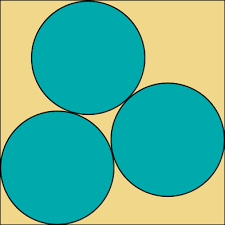Maximizing a triangle
I'm curious... Is it true, and, if so, is it straightforward to show that the maximum area triangle that can squeeze between these circles is equilateral?

No vote yet
1 vote
Easy Math Editor
This discussion board is a place to discuss our Daily Challenges and the math and science related to those challenges. Explanations are more than just a solution — they should explain the steps and thinking strategies that you used to obtain the solution. Comments should further the discussion of math and science.
When posting on Brilliant:
*italics*or_italics_**bold**or__bold__paragraph 1
paragraph 2
[example link](https://brilliant.org)> This is a quote# I indented these lines # 4 spaces, and now they show # up as a code block. print "hello world"\(...\)or\[...\]to ensure proper formatting.2 \times 32^{34}a_{i-1}\frac{2}{3}\sqrt{2}\sum_{i=1}^3\sin \theta\boxed{123}Comments
Actual Yes
Log in to reply
Sounds good... Do you know how to show it?
Log in to reply
Yes The area of all 4 circles are equal to the area of the 4 triangles
How a triangle can have curved sides
Log in to reply
It can't have curved sides... I am talking about squeezing a triangle (which has straight sides) in that little space in the middle (which has curved sides).
Actually yes you are right. I misunderstood the question
how i can,understand noah
You can model this on a co-ordinate grid, circles of radius 1 centered at (0,-1) and (+-1, 3−1). I couldn't really get anywhere, though. Probably a geometric solution is optimal, but I've never been good at those.